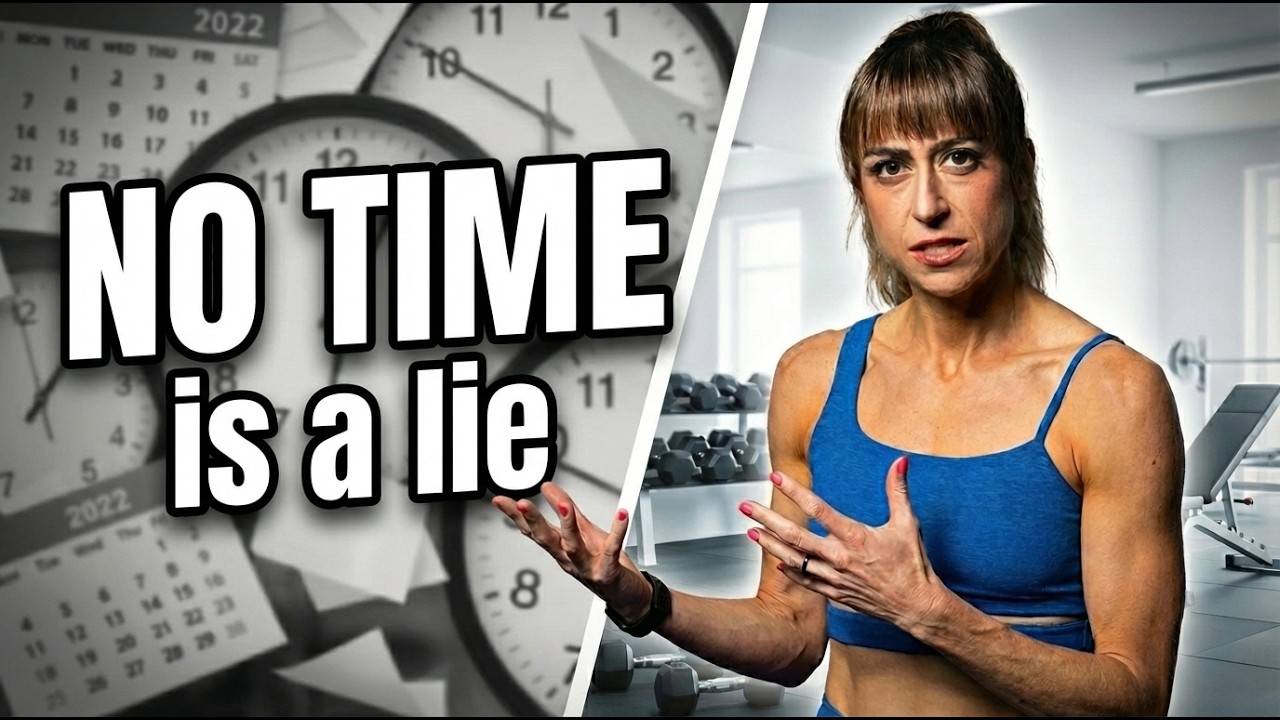It’s awkward. Uncomfortable. You can’t lift as heavy. And it takes coordination and balance…
I’m talking about one of the most underutilized but oh so important deadlift variations out there…
The Single Leg Deadlift.
All too often we avoid moves that challenge our balance because they make us feel uncomfortable in a way we don’t like and uncoordinated.
We may even dislike them because we feel we have to regress the movement instead of being able to beast mode out heavy loads like we can with other bilateral deadlift variations.
But for the exact reasons we often don’t like unilateral balance moves, like the single leg deadlift, we need to include them MORE.
They are super key to helping us stay strong as we get older!
Unilateral balance moves are a great way to correct any imbalances between both sides. They help us strengthen our weaker side without our stronger side compensating.
They help us avoid perpetuating the imbalance, which we can often do when lifting heavy with a bilateral move because, to move the weight, we simply rely on that stronger side.
So if you do want to beast mode out heavier deadlifts, the single leg deadlift is a great accessory move to help you build up.
It will still target your glutes and hamstrings to train that hip hinge movement pattern but in a way that will help you correct underlying recruitment issues!
And it will also help you become more focused and intentional about your foots connection to the ground. So much of powering that deadlift really does come from us pushing the ground away. And this focus on our foundation will pay off in terms of improving our stability and balance even in other moves.
The Single Leg Deadlift is a key exercise to help us focus on improving our stability from the ground up while improving that mind-body connection.
We have to remember a big part of lifting heavier is the strength of our mind-body connection. Our ability to recruit muscles efficiently and effectively allows us to lift more.
It’s why we want to include moves like this to really allow us to focus in on what we feel working and strengthen those weak links!
So how can you improve your Single Leg Deadlift form to embrace and master this amazing movement?
Here’s how I cue the move to help clients dial in their form…
To do the Single Leg Deadlift, start standing tall and shift your weight to one leg with the toe of your opposite foot touching down. As you shift your weight, think about the foot of your standing leg as a tripod, two points in the ball of your foot and one in your heel all pushing down into the ground as hard as you can.
Then instead of focusing on lifting that other leg toward the wall behind you, think about pushing the glute of your standing leg back.
As you sit back, your other leg will raise toward that wall to balance out your chest hinging over.
Do not reach toward the ground.
Soften your knee as you hinge to allow you to really load that glute and hamstring. You will even feel a stretch down your hamstring.
As you hinge, you want your hands to reach back toward the instep of your foot instead of reaching out. If you use weights, you want to lower the weights back toward your instep. This helps you load that standing leg and avoid overloading your lower back.
Keep your hips square to the ground as you hinge and don’t just try to reach lower and end up bending at the waist.
After hinging over to about parallel, think about pushing the ground away to stand back up. Too often we lose this focus on our foot’s connection to the ground which leads to us losing balance and even shifting our weight forward.
This shift or rock forward is also what can lead to lower back pain with deadlifts.
Drive that ground away to stand up tall and squeeze your standing glute at the top. Don’t be afraid to touch the other foot down when fully standing, but don’t use it to push back up.
While you can definitely modify this move by holding on to something if that helps you focus in more on what you feel working and your foot’s connection to the ground, I actually prefer to first try the single leg slider deadlift variation.
This is a great way to add stability to this unilateral move while allowing you to focus on the hip hinge movement.
It also teaches you to really sit back in that standing glute while worrying less about how high you lift that back leg.
With this modification, you will slide the foot back on the slider only as far as needed to counterbalance the hinge. Do not turn this into a lunge.
You can also use the variation as a progression for the single leg deadlift because sometimes the same but different can be the variety we need to move forward.
You can add loads to this single leg slider deadlift to make it just as challenging in a different way!
If you want to even create more of a challenge for yourself using the single leg deadlift, instead of adding loads, try different loading placements. Try a unilaterally loaded deadlift or even a front loaded one.
These may not create progression through heavier weights but they do by changing the activation of the muscles of your core and the instability created.
SUMMARY:
As uncomfortable and awkward as unilateral balance moves can be, they are key to helping us build functional strength.
Moves like the single leg deadlift will help keep you young while being a great accessory lift to improve your deadlifts not to mention your running!



0 Comments